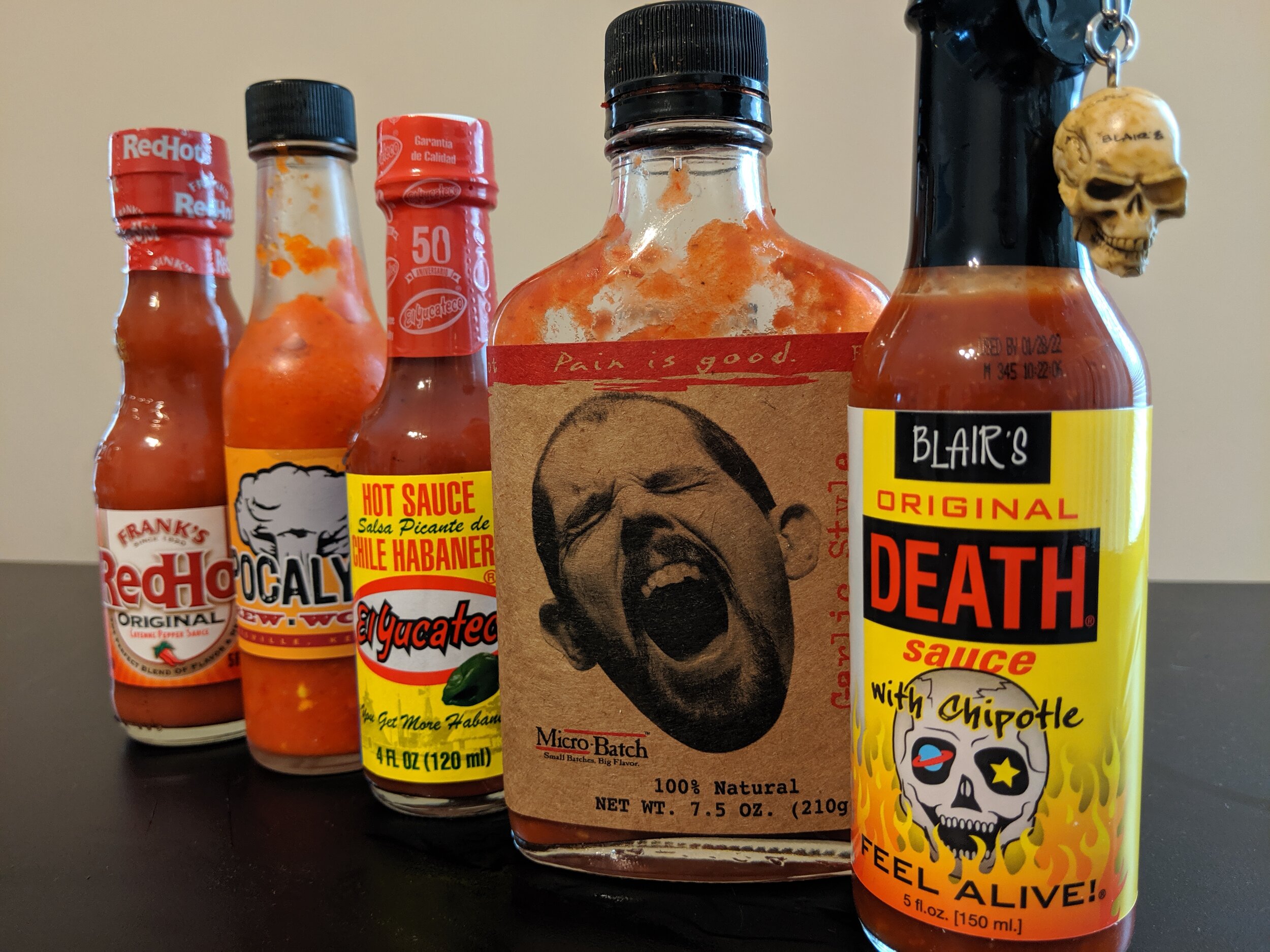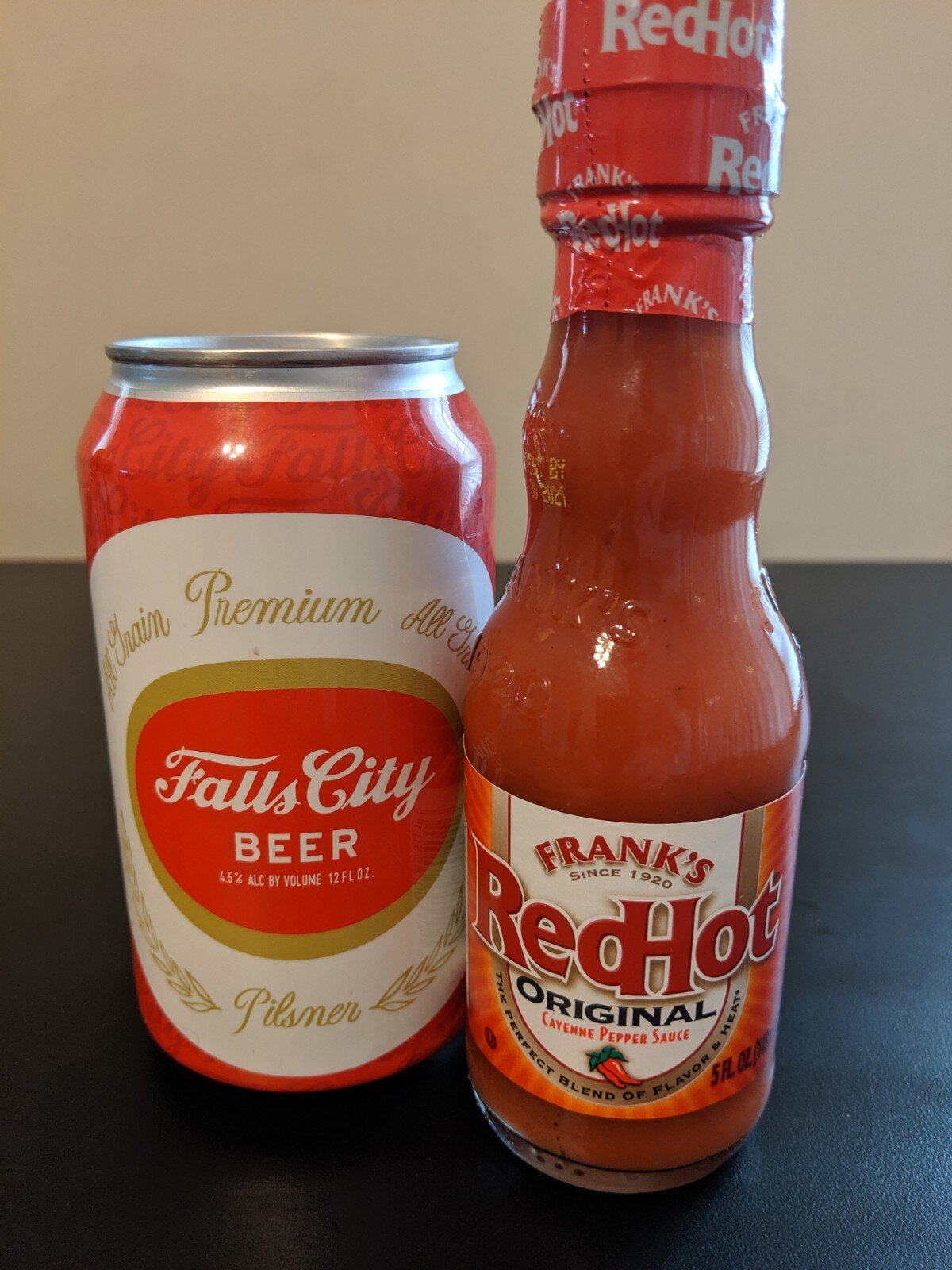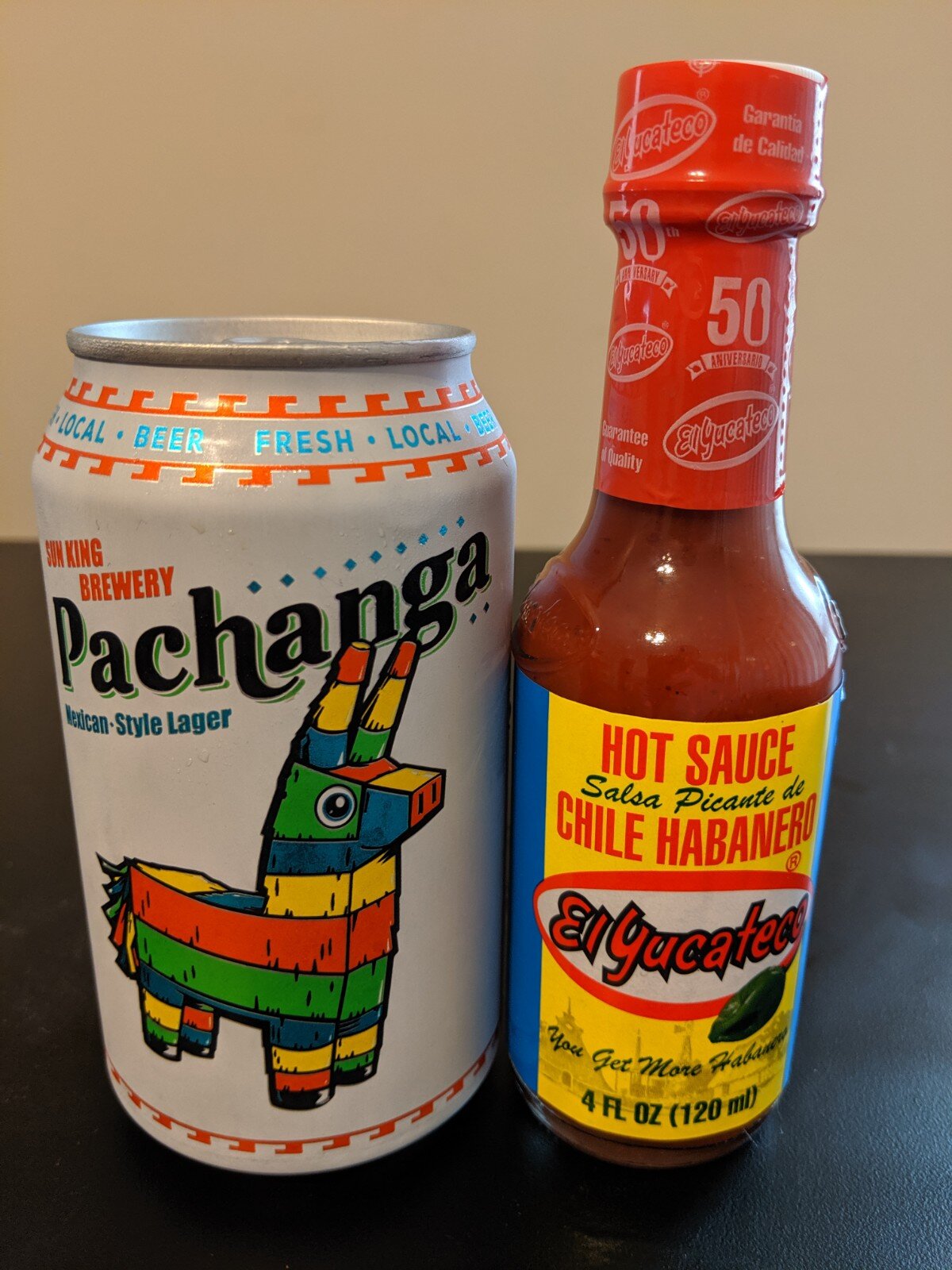Taste Test: Does Beer Really Pair With Hot Sauce?
A non-scientific approach to finding the best beer style to pair with hot wings
All photos by Kevin Gibson
Beer and hot wings. Hot wings and beer. These are two of mankind’s greatest treasures, a reason to get out of bed every day, and people have been pairing them for decades.
For years, personally, I have preferred an IPA or APA for spicy foods—they just seem to go together. I never questioned it; I just knew I enjoyed it. But the idea that drinking beer quells the heat left behind by the hot pepper sauce found on the chicken appendages needs to be approached with caution. A study published by CraftBeer.com in 2016 told us that if you’re pairing a hoppy beer with spicy foods, you might not be getting the desired result—at least if you’re expecting relief from the pain of the heat.
In fact, the author of the study, Dr. Nicole Garnau, wrote that “beer is a pretty terrible choice for spicy food.”
Also, in what would seem like a contradiction of interest, a 2015 study by Samuel Adams—whose Rebel IPA won a silver medal in the 2018 NY International Beer Competition— conducted a series of pairings tested by a panel of chefs and culinary experts. It showed that hoppier IPAs actually magnified the intensity of heat.
You may or may not know that it is widely considered that the best liquid for immediate relief from an overdose of hot pepper burn is actually milk. But how lame would it come off to go to a sports bar, order a basket of blazing-hot chicken wings and then ask for a large glass of milk?
I’m a pepper head, so I like it spicy. Like, really spicy. However, not everyone feels that way, which is why most places offer sauces that have varying levels of heat. I decided to conduct an extremely unscientific pairing, putting together five various hot sauces with a variety of beers one might order in a bar to go with them.
Rather than make five different batches of wings, I just ate the sauces on tortilla chips to get me there a bit faster—and to not stuff my stomach with greasy, fried wings in the process.
Pairing 1: Frank’s Hot Sauce and Pilsner
I started things at a low heat level, pairing Frank’s Hot Sauce, a popular choice for basic Buffalo-style wings, with a basic pilsner-style beer made by Louisville, Ky.-based Falls City Brewing Co. (You likely won’t find this particular beer outside Kentucky, but any pilsner is fine.)
I put enough of the bright red sauce on my chip to fully get the flavor and incite a bit of heat on my palate. Once the burn began, I simply began alternating bites with sips of beer. What happened was … not a lot, really. The cayenne-based sauce is heavy on vinegar and salt, but I managed to generate some heat. What I felt the beer doing was cooling my palate temporarily, as expected, with the soft sweetness in the pilsner tempering the heat. A bit. And again, only temporarily.
The heat didn’t leave my taste buds immediately, which I expected, but the beer didn’t seem to enhance the burn. It’s a fine pairing for these two basic flavor profiles—just don’t expect your light beer to fully extinguish that Buffalo wing heat.
Pairing 2: Homemade Scotch Bonnet and Apocalypse Pepper Sauce with Pale Ale
I stepped the heat up in the second pairing with a sauce I made at home using Scotch Bonnet peppers and a couple of Apocalypse peppers (thanks to Apocalypse Brew Works for the sticker I used as a label). I paired it with a West Sixth Brewing beer called Pennyrile Pale Ale, a moderately hoppy ale with a bit more oomph than a pilsner, but not quite in IPA territory either.
Using the same method, I created a nice burn with a couple of bites of the thick, bright orange sauce on a chip, then added beer, alternating a few times to see what transpired on my tongue. The burn got there more quickly this time, along with a bright, garlicky flavor. Then I added a couple of swallows of the ale.
The tropical notes in the beer certainly paired well with the citrusy flavors in the sauce, but I did note that while the coldness of the beer was again nice on my warming palate, the burn was not backing down. Did the hops enhance the burn? Maybe. And this beer is moderate in that realm. Hmmm. Maybe the sauce was hotter than I remembered?
Pairing 3: El Yucateo Chile sauce with Mexican Style Lager
I doubled back a bit on this pairing, putting El Yucateco Habanero Chile, a sauce I find at most Mexican restaurants, with Pachanga, a Mexican-style lager from Sun King Brewing in Indianapolis. The sauce is another hot one—a menacing bright red despite an initially smooth entry.
This would probably be in the range of a classic “hot” or “extra hot” sauce at a wings joint, or perhaps just a step above. Regardless, to me it is a staple with Mexican food of any kind. A few bites in, I introduced the Pachanga. The crispy lager, of course, immediately offered relief, but it was short-lived as expected.
Flavor-wise, though, the pairing was pretty spot-on. The sauce was hot, for sure, and not as citrusy as the Apocalypse sauce, but it wasn’t smoky or overbearing. The straight-ahead lager played well with it, and the two got along on the palate. But the slight step up in heat was apparent, and had me wondering if the milk in my fridge was past its expiration date. Ow.
Once again, the hot pepper sauce wins, even if the lighter beer didn’t seem to enhance the heat greatly.
Pairing 4: Blair’s Original Death Sauce with Amber Ale
For better or worse, I ramped up the spice in the last two rounds, and in this round I paired Blair’s Original Death Sauce with New Belgium’s Fat Tire, a classic American amber ale. In this round, I wanted to see how the malts helped out—and I also wanted to see how the flavor meshed with the smoky aspect of the dark, brownish-red sauce.
This sauce bursts with flavor, from garlic to chipotle, and the heat comes on quickly. After five healthy bites of the sauce, I was burning. Then I took a generous drink of the malty beer. Again, the cool sensation gave me a moment of relief, but the burn returned pretty quickly and my eyes started to water. Nose running, I went for another big swallow of beer.
I noticed neither substantial relief from nor enhancement of the heat. But I was right in thinking the flavor profiles were quite friendly. My conclusion from this round was that an amber ale is a pretty good choice for a smoky hot sauce or spicy barbecue sauce. The sweetness accented the flavors nicely. That said, I had to take a break to let my palate settle down before moving on to round five.
Pairing 5: Garlic Style Hot Sauce With Classic IPA
For the final round, I put two of my favorites together in Pain is Good Batch #37 Garlic Style Hot Sauce with Bell’s Two Hearted Ale. I love this sauce, which is made with a carrot base and ample habanero and an ample dose of garlic. It just made sense for my taste buds to pair it with one of my favorite IPAs.
Imagine if Buffalo Wild Wings combined its Wild sauce with its Spicy Garlic—that’s sort of what Pain is Good Batch #37 brings, heat-wise. I love the stuff, but a little tends to go a long way.
After my cooling-off period (yes, the milk was still good), I kicked the final round off with a big glob of amber sauce on a chip. It took three bites to get the burn going, then I took a drink of the IPA. You know what? The studies were right. There was a noticeable spike in the heat once the beer hit my palate. And it didn’t let go.
I took a second drink and, even without more of the sauce, the heat kicked up a touch yet again. I took only one more bite of sauce before I had to call it quits as my sinuses opened wide. Delicious but dangerous is how I would describe this pairing.
Honestly, I think I’ll stick to less hoppy beers in the future if high spice is involved—but moderate heat with a hoppy beer is something I’ve enjoyed frequently without noticing a heat spike. Conclusion: if you’re going to show off for your friends by taking a hot sauce challenge, you might want to stick with a pilsner or an amber (many suggestions can be found here in the winners lists for the NY International Beer Competition).
Now, let me at that milk again.




